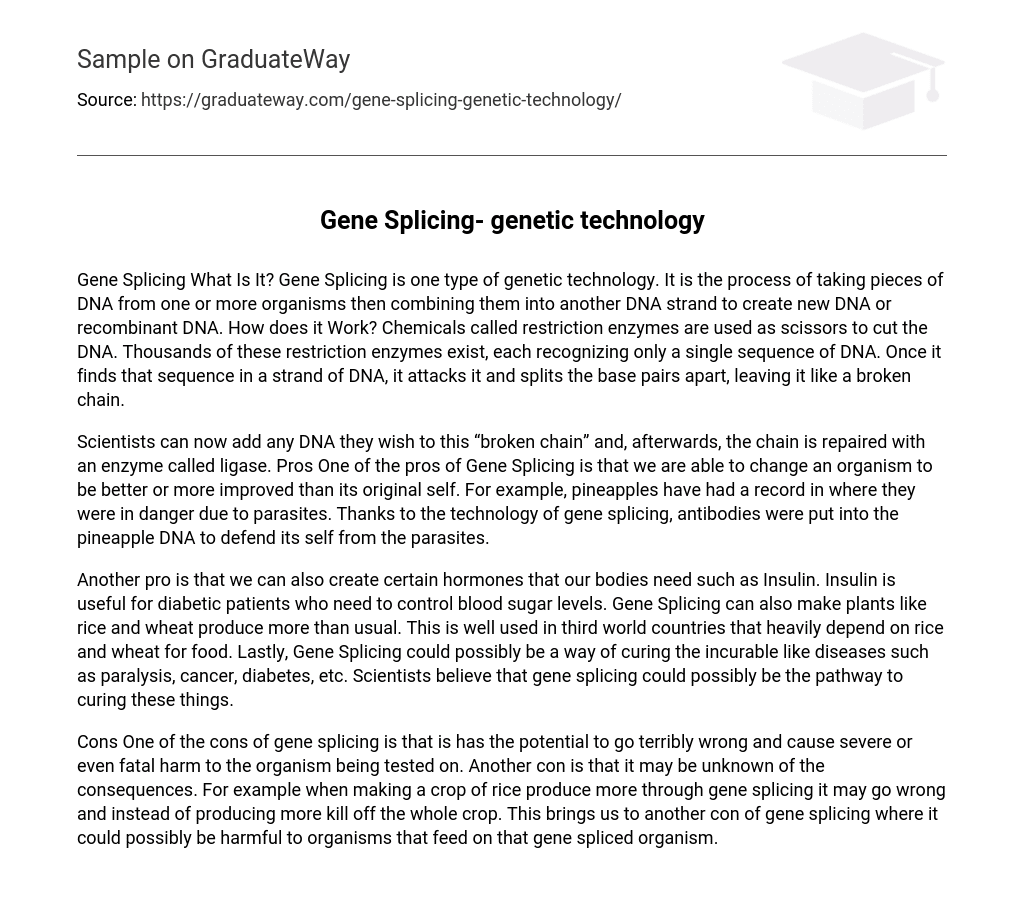Gene Splicing: What Is It?
Gene Splicing is a type of genetic technology that involves taking pieces of DNA from one or more organisms and combining them into another DNA strand to create new DNA or recombinant DNA.
How Does It Work?
The process involves using chemicals called restriction enzymes as scissors to cut the DNA. Thousands of these restriction enzymes exist, each recognizing only a single sequence of DNA. Once it finds that sequence in a strand of DNA, it attacks it and splits the base pairs apart, leaving it like a broken chain.
Scientists can add any desired DNA to a broken chain” and repair it with an enzyme called ligase. One of the advantages of gene splicing is that organisms can be improved beyond their original state. For instance, pineapples were once in danger from parasites, but gene splicing technology allowed scientists to insert antibodies into pineapple DNA, thereby enabling the fruit to defend itself against these parasites.
One advantage of gene splicing is the ability to create essential hormones, such as insulin, which is beneficial for diabetic patients who need to regulate their blood sugar levels. Additionally, gene splicing can increase the production of crops like rice and wheat, which is especially useful in third world countries that rely heavily on these foods. Lastly, gene splicing has the potential to cure previously incurable diseases such as paralysis, cancer, and diabetes. Scientists believe that it could be a pathway to finding cures for these illnesses.
One of the cons of gene splicing is that it has the potential to go terribly wrong and cause severe or even fatal harm to the organism being tested on. Another con is that the consequences may be unknown. For example, when attempting to make a crop of rice produce more through gene splicing, it may instead kill off the entire crop. This brings us to another con of gene splicing where it could potentially be harmful to organisms that feed on the gene-spliced organism.





